#Citizen Science
Explore tagged Tumblr posts
Text
"As climate change continues to rear its destructive, uncertain head, canine companions are playing a vital role.
There are conservation dogs sniffing out invasive species in nature preserves, helping to clean contaminated waterways, and even avalanche rescue dogs that save people in the great outdoors.
Most of these dogs are bred for greatness and train their whole puppyhood to work in these roles.
But a recent study from Virginia Tech wondered: Can everyday dogs do the same?
In the study, Virginia Tech conducted a first-of-its-kind experiment to see if citizen dog-handler teams can achieve species detection rates comparable to those of professional conservation dogs.
Over 1,000 dog owners expressed interest in the study, with more than 40% of them having prior experience in sport scent detection or other related activities.
Sport scent detection is a recreational activity in which dogs find hidden scents in training classes, and sometimes, competitions.
Ultimately, the researchers selected 182 canine-citizen teams across the U.S. to participate in their trial to see if everyday people and pets could effectively detect the “elusive” egg masses of the spotted lanternfly.
To eradicate the threat, it’s important to catch the egg masses early, but according to the study’s co-author, Mizuho Nita, “finding them is like searching for a needle in a haystack.”
With their keen sense of smell, dogs can be trained to sniff out the egg masses without disturbing the environment. Professional detection dogs do this with high accuracy, but there are not nearly enough of them to tackle the mounting concern of the invasive species, an article for the university explained.
“What if we tapped into the tens of thousands of dog owners already doing scent detection as a hobby around the country?” the researchers asked.
So, with 182 citizen scientists and their furry friends on board, researchers provided them with “devitalized” or non-hatching egg masses as a training aid. The participants trained their dogs at home or in small groups with the help of a local trainer to learn how to identify the invasive species.
“Anytime you can stimulate your dog, it’s good for them,” participant Bill Wellborn said, of his 7-year-old Tibetan terrier, Pepe.
“Pepe obviously enjoys it. And it’s a way we can take dog skills and training to help our community.”
Wellborn and Pepe — and the other participating teams — worked in sessions multiple days a week for several months, with dogs eventually tested in two environments.
In a controlled indoor environment, the dogs had to complete an odor recognition test, in which they identified the box with the spotted lanternfly egg masses from multiple boxes with other items and scents.
The dogs that passed this test then advanced to a field test outdoors, where they were required to find the same scent outside, with other competing smells.
They correctly identified the egg masses 82% of the time in the controlled tests and 61% of the time in field trials. Although the field test number dropped, it’s still a better score than human-only searches.
“These teams demonstrated that citizen scientists and their dogs can play a meaningful role in protecting agriculture and the environment from invasive species,” Sally Dickinson, the study’s lead author, said in a statement.
“With proper training, dog owners can turn their pets into powerful partners for conservation.”
For the dogs that passed both tests, 92% were successful in finding live egg masses with minimal extra training, according to the researchers.
“There are thousands of people out there doing scent work with their dogs just for fun,” Erica Feuerbacher, an animal behaviorist and a co-author on the study, said.
“What Sally’s study shows is that this can be more than a hobby — these citizen-scientists and their dogs can be a valuable resource for fighting the spread of an invasive pest.”
The dog handlers agree.
“Being able to do the same thing for the greater good — for citizen science — adds another layer we didn’t have before,” Katie Thomas, a participant, shared about her pit bull mix, Finch.
And now, with a proven concept, the future is bright for dog owners who want to bond with their pets and do a little more good.
“This research is about more than detection,” Dickinson concluded. ��It’s about empowering people to work alongside their dogs to protect the places and communities they care about.”
youtube
-Article via GoodGoodGood, July 18, 2025. Video via Virginia Tech, July 16, 2025.
#dogs#conservation#conservation dogs#dogblr#invasive species#spotted lanternfly#united states#north america#citizen science#ecology#environment#working dogs#video#good news#hope
449 notes
·
View notes
Text
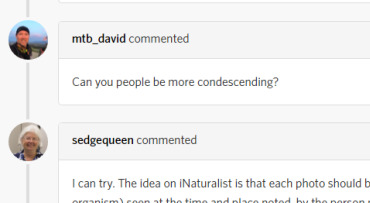
27K notes
·
View notes
Text


I try to be really polite on my social media, but today's post has me wanting to unleash a creative string of profanity.
Thanks to a citizen scientist using iNaturalist (and, by the way, all iNat users are by default citizen scientists), a spotted lanternfly (Lycorma deliculata) nymph was spotted in Portland, less than a mile from my apartment. It's the third verified sighting of this highly invasive species in Oregon, the first being in The Dalles in 2023, and one in Eugene last year. There's no telling how many there are across the region now, but given that these have primarily been a problem east of the Mississippi it's disheartening to see their spread here.
Spotted lanternflies are native to China and Japan, but have since become destructive invasive species in South Korea and North America. I wrote up a more detailed description of them here on my website. They attack a wide variety of plants, to include native species and agricultural crops.
Their preferred host tree is the tree of heaven (Ailanthus altissima), which is itself also a pernicious invasive species here in North America. It can be very difficult to control, and is most effectively killed with herbicides applied to cuts in the bark--simply cutting it down won't help, because it just grows back, and it can be very difficult to dig up entirely once established. While lanternfly nymphs can survive on other plants, they are not as healthy as those on tree of heaven, and so taking away their host is a big step in slowing them down.
Speaking of big steps, if you see a lanternfly or its egg casings, stomp on it! It's an immediate death, and it removes it from the breeding pool. This is especially important in spring and summer when lanternflies are still in their nymph stages, because they aren't able to breed until they're adults in the fall.
Finally, this is a great example of how vital citizen science is in getting more observers out in the field, and also how we need professional scientists (like those at the Oregon Department of Agriculture) to get the word out to the general public with information about invasive species. The USDA also has valuable articles about lanternflies on their website and has been working on the spotted lanternfly problem since the insects first arrived here in 2014. The United States has been a leader in the sciences for decades, and it's important we keep it that way for so many reasons, to include protecting our food and our natural areas.
#spotted lanternfly#spotted lanternflies#invasive species#Tree of Heaven#invasive animals#invasive plants#insects#bugs#bugblr#Oregon#Pacific Northwest#PNW#nature#ecology#wildlife#science#citizen science
440 notes
·
View notes
Text
Do you have a brain? Were you born in a hemisphere?
Please click here!!!
It's only three radio button questions, it's SO FAST. 2 mins, tops.
Open until at least Monday 14th April 2025.
And if you want to spy on some public statistics as the results come in, please click here.
454 notes
·
View notes
Text
Citizen science opportunity!
Project Phoenix has started for the year! It's a simple 10 minute a week survey, logging bird behavior and how it may be affected by wildfire. They specifically are looking for volunteers from California, Oregon, and Washington.
You can read some more about it here!
And sign up and read even more about it here!
@todaysbird
281 notes
·
View notes
Text
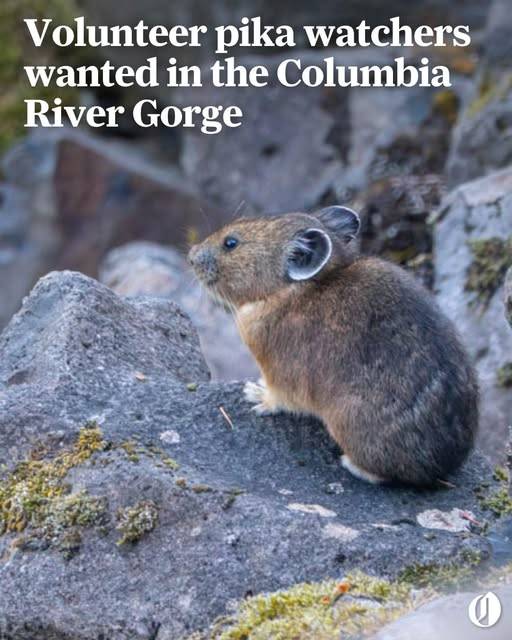
Volunteer pika watchers wanted in the Columbia River Gorge
If you love spending time outside with a pair of binoculars, spying on adorable little critters, then this is the job for you. The Oregon Zoo is once again seeking volunteer pika watchers to scan Columbia River Gorge terrain for the tiny, squeaking mammals.
Click the link to read more:
https://www.oregonlive.com/environment/2025/04/volunteer-pika-watchers-wanted-in-the-columbia-river-gorge.html
Photo courtesy of Michael Durham/The Oregon Zoo
342 notes
·
View notes
Text
It’s a little bit more of a bummer than most citizen science projects, but I wanted to give a shoutout to dBird, where you can report dead or injured birds throughout the USA to provide data for NYC Audubon. We might not all have time for a daily eBird checklist, but hopefully you don’t come across as many dead birds - if you do, the whole process took me under a minute to report a sighting. There’s less than 2000 birds reported for 2024 as of this post (which isn’t a lot, given how many birds die annually), so if and when you sadly find a dead bird, think of dBird’s conservation efforts and send in your report!
1K notes
·
View notes
Text
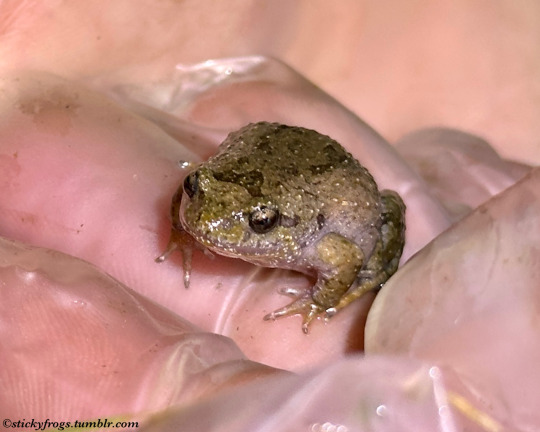
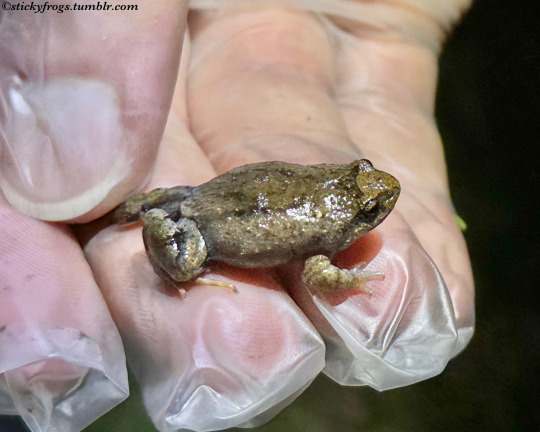
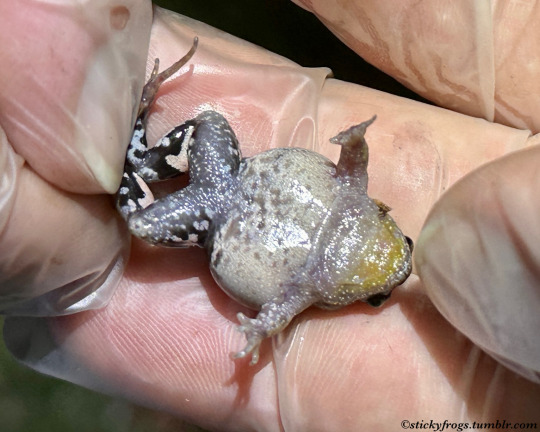
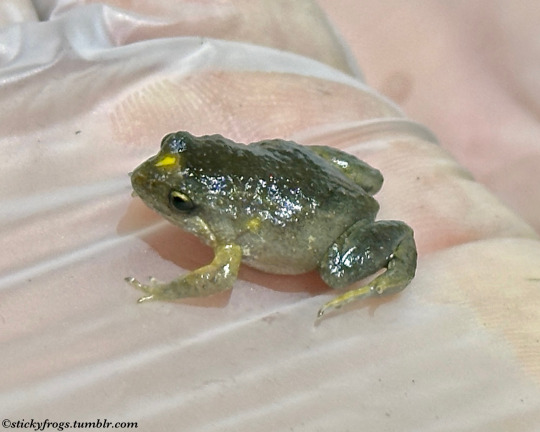
Tonight we met these Very Lovely Victorian Smooth Froglet (Geocrinia victoriana) friends in Park Orchards with Ecologist and Frog Expert Dave De Angelis! They have a very unique call and Fabulous Pants!
259 notes
·
View notes
Text
Dandelion News - January 15-21
Like these weekly compilations? Tip me at $kaybarr1735 or check out my Dandelion Doodles!
1. Landmark debt swap to protect Indonesia’s coral reefs

“The government of Indonesia announced this week a deal to redirect more than US$ 35 million it owes to the United States into the conservation of coral reefs in the most biodiverse ocean area on Earth.”
2. [FWS] Provides Over $1.3 Billion to Support Fish and Wildlife Conservation and Outdoor Access

“Through these combined funds, agencies have supported monitoring and management of over 500 species of wild mammals and birds, annual stocking of over 1 billion fish, operations of fish and wildlife disease laboratories around the country, and provided hunter and aquatic education to millions of students.”
3. Philippine Indigenous communities restore a mountain forest to prevent urban flooding

“Indigenous knowledge systems and practices are considered in the project design, and its leaders and members have been involved throughout the process, from agreeing to participate to identifying suitable land and selecting plant species that naturally grow in the area.”
4. Responsible Offshore Wind Development is a Clear Win for Birds, the U.S. Economy, and our Climate

“[T]he total feasible offshore wind capacity along U.S. coasts is more than three times the total electricity generated nationwide in 2023. […] Proven strategies, such as reducing visible lights on turbines and using perching deterrents on turbines, have been effective in addressing bird impacts.”
5. Illinois awards $100M for electric truck charging corridor, Tesla to get $40M

“The project will facilitate the construction of 345 electric truck charging ports and pull-through truck charging stalls across 14 sites throughout Illinois[…. E]lectrifying [the 30,000 daily long-haul] trucks would make a huge impact in the public health and quality of life along the heavily populated roadways.”
6. Reinventing the South Florida seawall to help marine life, buffer rising seas
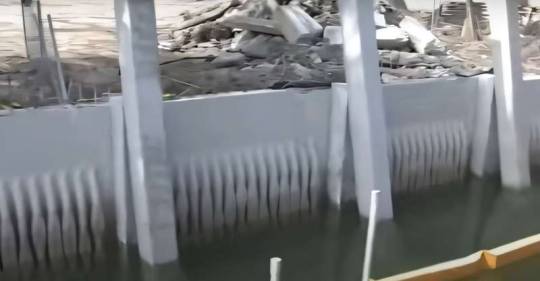
“[The new seawall] features raised areas inspired by mangrove roots that are intended to both provide nooks and crannies for fish and crabs and other marine creatures and also better absorb some of the impact from waves and storm surges.”
7. Long Beach Commits to 100% All-Electric Garbage Trucks
“[Diesel garbage trucks] produce around a quarter of all diesel pollution in California and contribute to 1,400 premature deaths every year. Electric options, on the other hand, are quieter than their diesel counterparts and produce zero tailpipe emissions.”
8. ‘This Is a Victory': Biden Affirms ERA Has Been 'Ratified' and Law of the Land

“President Joe Biden on Friday announced his administration's official opinion that the amendment is ratified and its protections against sex-based discrimination are enshrined in the U.S. Constitution.”
9. A Little-Known Clean Energy Solution Could Soon Reach ‘Liftoff’

“Ground source heat pumps could heat and cool the equivalent of 7 million homes by 2035—up from just over 1 million today[…. G]eothermal energy is generally considered to be more popular among Republicans than other forms of clean energy, such as wind and solar.”
10. Researchers combine citizens' help and cutting-edge tech to track biodiversity

“Researchers in the project, which runs from 2022 to 2026, are experimenting with tools like drones, cameras and sensors to collect detailed data on different species, [… and] Observation.org, a global biodiversity platform where people submit pictures of animals and plants, helping to identify and monitor them.”
January 8-14 news here | (all credit for images and written material can be found at the source linked; I don’t claim credit for anything but curating.)
#good news#hopepunk#nature#national debt#coral reef#conservation#funding#fish and wildlife#philippines#indigenous#agroforestry#green infrastructure#offshore wind#wind energy#electric vehicles#illinois#florida#sea wall#habitat#california#equal rights#human rights#us politics#geothermal#biodiversity#citizen science#climate change#invasive species#endangered species#clean energy
282 notes
·
View notes
Text
Citizen science is a powerful tool for involving more people in research. By influencing policy, it is transforming conservation at global, national and local levels.
Citizen science actively encourages non-scientists to be a part of the scientific research process. Sometimes the terminology gets confusing. We say “non-scientists” but through taking part in citizen science projects, people become scientists – they’re just not professionally involved in the research.
It’s also worth noting that the “citizen” in citizen science is completely unrelated to ideas of national citizenship.
Put simply, it’s science by the people for the people.
Citizen scientists can take part in every stage of the research process. Depending on the project, participants can write the research questions, choose the methods, collect the data, analyse and interpret the results, and share the research as widely as possible. By broadening people’s understanding of scientific problems and solutions, citizen science can act as a powerful catalyst for change.
It is already making an impact across lots of disciplines, including conservation, by addressing barriers to policy change such as lack of evidence and low levels of public engagement and input. While it’s not yet common for citizen science to directly influence policy, in our research we’ve seen how citizen science can shape policy at every scale: through promoting policy, monitoring progress towards policy or advocating for policy enforcement.
At a local level, citizen science can influence policy and transform conservation science. The clean air coalition of western New York is a group of citizens concerned about smells and smoke, and their connection to chronic health problems in the community. The group collected samples in 2004 to determine what was in the air and presented this data to the New York Department of Environmental Conservation (DEC) and the US Environmental Protection Agency.
212 notes
·
View notes
Text
If you're feeling anxious or depressed about the climate and want to do something to help right now, from your bed, for free...
Start helping with citizen science projects
What's a citizen science project? Basically, it's crowdsourced science. In this case, crowdsourced climate science, that you can help with!
You don't need qualifications or any training besides the slideshow at the start of a project. There are a lot of things that humans can do way better than machines can, even with only minimal training, that are vital to science - especially digitizing records and building searchable databases
Like labeling trees in aerial photos so that scientists have better datasets to use for restoration.
Or counting cells in fossilized plants to track the impacts of climate change.
Or digitizing old atmospheric data to help scientists track the warming effects of El Niño.
Or counting penguins to help scientists better protect them.
Those are all on one of the most prominent citizen science platforms, called Zooniverse, but there are a ton of others, too.
Oh, and btw, you don't have to worry about messing up, because several people see each image. Studies show that if you pool the opinions of however many regular people (different by field), it matches the accuracy rate of a trained scientist in the field.
--
I spent a lot of time doing this when I was really badly injured and housebound, and it was so good for me to be able to HELP and DO SOMETHING, even when I was in too much pain to leave my bed. So if you are chronically ill/disabled/for whatever reason can't participate or volunteer for things in person, I highly highly recommend.
Next time you wish you could do something - anything - to help
Remember that actually, you can. And help with some science.
#honestly I've been meaning to make a big fancy thorough post about this for literally over a year now#finally just accepted that's not going to happen#so have this!#there's also a ton of projects in other fields as well btw#including humanities#and participating can be a great way to get experience/build your resume esp if you want to go into the sciences#actual data handling! yay#science#citizen science#climate change#climate crisis#climate action#environment#climate solutions#meterology#global warming#biology#ecology#plants#hope#volunteer#volunteering#disability#actually disabled#data science#archives#digital archives#digitization#ways to help#hopepunk
42K notes
·
View notes
Text
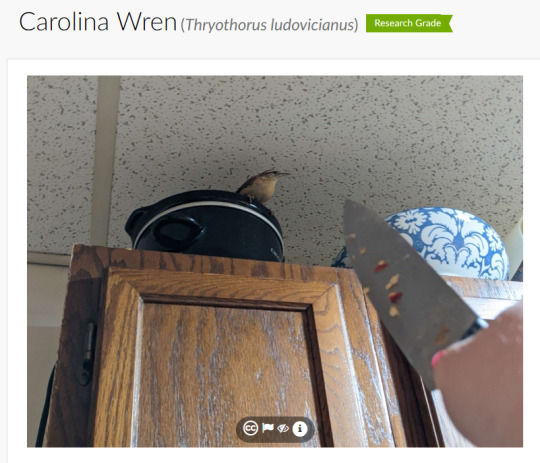

https://www.inaturalist.org/observations/162471615
This is my favorite local inat post I have ever found and I thought y’all might like it
#inaturalist#naturalist#inat ooc#inaturalist out of context#citizen science#kiah kiah#im going to cry laughing#observation submission
12K notes
·
View notes
Text
The City Nature Challenge 2025 is due to kick off in a few weeks, April 25-28, a one-weekend challenge to go out and observe and record as many living, wild things as possible. As a researcher recently pointed out to me, we are creating data points. We are providing hard evidence that this species was right there, on this day. There literally aren't enough scientists in the world to do this kind of research, let alone the funding. And who knows, maybe you'll discover a new species!
All you need is an iNaturalist account accessible through an app or browser, a camera, and access to the world we live in.
I challenge each of you to check your own cities to see if they are participating, or join the global challenge in the link. Take your camera and go outside - look at bugs and plants and animals and mold and fungus. Look at the lichen growing on the fence you pass everyday - what kind is it? What kind of ants are carrying the crumbs away at the picnic? What kind of squirrel is making that racket up in the tree? Pick a plant you walk past everyday, a weed or grass, something you've dismissed a thousand times - what is it?
Get curious. Get involved.
125 notes
·
View notes
Text
by Grant Brown, Wed 16 Jul 2025
A unique high school program empowers students to play a vital role in California salmon conservation efforts.
In an era when most teenagers are glued to their phones, Casa Grande High School students wade through cold creeks to save endangered fish. Their unusual after-school program strengthens California salmon conservation efforts while making waves in the scientific community.
The United Anglers program at Casa Grande High School in Sonoma County represents a new model for California salmon conservation. In 2023, these teenage conservationists tracked 33 salmon in local waterways, providing vital data to federal wildlife officials. Each fish represents a small victory in the ongoing battle to protect Northern California’s aquatic ecosystems.
These are not just casual observations. The students hold an official state permit to catch, tag, and release salmon. They record the location, size, and health condition of each fish—information that strengthens California salmon conservation by filling crucial gaps in scientific knowledge about the Petaluma watershed. This data helps shape conservation policies and wildlife management strategies.
Climate change and urban development pose growing threats to local fish populations. As rivers warm and change course, salmon struggle to find their way back to their breeding grounds. The students’ work helps scientists understand how these changes affect fish migration patterns. Their findings could influence future urban planning and environmental protection measures.
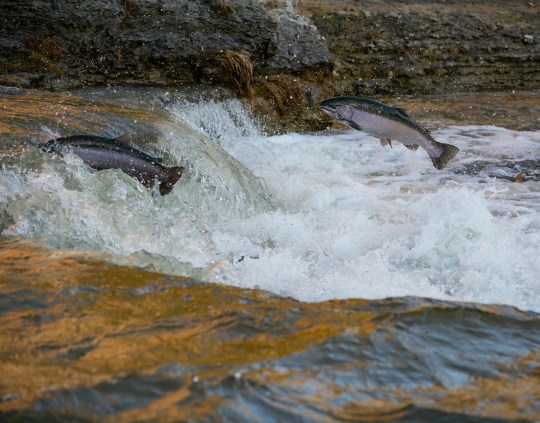
What started as a club for habitat cleanup and tree planting 42 years ago has evolved into a sophisticated conservation program. Today’s students handle complex responsibilities and contribute meaningful data to federal research efforts. Their work exemplifies the potential of youth-led environmental initiatives.
The students’ newest challenge focuses on steelhead trout, a threatened species that is becoming increasingly rare in local waters. After years of preparation, the program received federal permission to rescue and shelter juvenile steelhead from drying rivers—a significant achievement for a high school program. This new permit allows students to remove fish from threatened areas and care for them until conditions improve.
Daily responsibilities keep these young conservationists busy. They feed fish, clean massive tanks, monitor water temperatures, and transport heavy equipment for fieldwork. Many students find an unexpected passion in this hands-on conservation work, and the program often sparks lifelong interest in environmental protection.
The program’s success stems partly from the students’ fearless approach to fieldwork. They scramble up muddy riverbanks and wade through icy waters with enthusiasm. This practical experience prepares them for future environmental science and conservation biology careers.
Dan Hubacker, the science teacher overseeing the program, emphasizes its importance for steelhead trout conservation. He said adult steelhead have not been seen near the school in years. The students’ work could help prevent this species from disappearing from local waterways.
The program also creates strong bonds among participants. Students report finding their place in school through this shared mission. As they care for juvenile fish struggling to survive, these teenagers gain perspective on their journey to adulthood. Many form lasting friendships through their shared commitment to conservation.
Darren Howe, San Francisco Bay branch supervisor of NOAA Fisheries, praises the students’ contributions. Their ongoing data collection helps fill gaps in understanding fish populations, providing vital information for conservation decisions. This collaboration between students and federal agencies sets a promising example for future conservation efforts.
The success of United Anglers demonstrates the untapped potential of engaging young people in scientific research and environmental protection. These students collect valuable data while developing real-world skills in field research, data analysis, and wildlife management.
The program’s impact reaches beyond immediate conservation goals. It shows how environmental education can transform students into active champions of California salmon conservation. As climate change threatens more species, programs like United Anglers become increasingly crucial for protecting vulnerable wildlife.
The United Anglers program shows how young people can contribute to wildlife conservation. From its humble beginnings as a creek cleanup project, it has evolved into a model for hands-on environmental education. Their success has inspired similar initiatives across California, advancing salmon conservation through youth engagement and citizen science.
#good news#environmentalism#science#environment#nature#animals#conservation#climate change#climate crisis#usa#california#salmon#fish#salmon restoration#rivers#salmon conservation#wildlife#citizen science#youth
55 notes
·
View notes
Text
Want to hunt for black holes, but lack access to a mountaintop observatory or deep-space telescope? There’s an app for that—and you can help out astronomers by using it. Developed by the Dutch Black Hole Consortium, an interdisciplinary research project based in the Netherlands, Black Hole Finder is a free program available both on smartphones and as a desktop website. After reviewing a quick tutorial, all you need to do is study images taken by BlackGEM, a telescope array in Northern Chile tasked with searching the skies for cosmic events called kilonovas. Although launched in March 2024, as Space.com noted on August 19, the project’s recently expanded from just English and Dutch to support Spanish, German, Chinese, Bengali, Polish, and Italian.
Continue Reading.
187 notes
·
View notes
Text
Citizen Science and Contributing To Scientific Endeavor When You're Not "A Scientist"
Comments on some of my posts about science and misinformation express frustration with scientific establishments, and want to see more accessibility and attention given to amateurs participating in the scientific process and having their scientific voices heard.
If being involved in the creation of knowledge and discovery is something important to you, that's something I strongly encourage! It's absolutely possible. Amateur researchers with a passion and an eye for detail have made some fantastic discoveries - but what is often glossed over in stories like these are the years of work, the patient dedication, and the collaboration with university researchers that often underlie such discoveries.
The search for truth and information and the passion for science is present in a lot of people who aren't official "scientists" - curiosity is natural! And if participation in scientific observation, hypothesizing, experimentation, and discovering new things about the world is important to you, there are lots of ways to go about contributing - and the new year is a great time to start.
What are you interested in?
Ecology
Observing the world around you is for everybody. Getting invested in the environment of your hometown is for everybody. And, as the Mythbusters famously said,
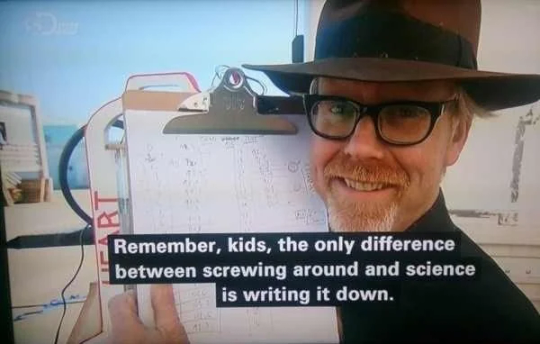
Some ideas for a local ecology project:
Record the temperature outside every day at the same time - at sunrise, or noon, or sunset, or midnight. Depending on where you are, the local weather recording station may be miles away or on top of a mountain - measure the temperature yourself and compare it each day to what your app says. When is it accurate? When isn't it?
Record the weather every day. How much precipitation? What time of day? What kind?
Record what animals you see every day, where, when, and how many. Or choose a specific animal, like birds, or bees on flowers, or turtles or frogs in a local pond, or whiptail lizards vs. invasive house geckos, and record the numbers you see each day.
Record when in the year you see the first, or last, of a plant or animal. When the crocuses sprout, when the buds appear on the maple trees, when you see the first clover flowers or prickly pear flowers, when the first robin comes out or the first lizards come out of hibernation.
If you have an outdoor cat or a free-roaming dog, attach a GoPro or similar small camera to its collar to see where it goes and what it does.
Identify the plants growing in your neighborhood, and check in on it regularly to keep track of how each one fares in different weather conditions, or if any animals particularly like or don't like to eat it.
Bulk order some test strips, then take a small sample of soil from a local park or water from a local waterway each weekend and test them for PH, lead, chemicals, or whatever. See if it changes over the year, or after a heavy rainfall, or during drought.
Take a photo of the same spot every day for a year.
Linguistics
The study of how people use language! Everybody uses language in some capacity.
Do you have any small children near you? Talk to them! Record how they pronounce things and what they call new (or even familiar) concepts. Look for patterns.
Ask people you know if "dog" and "blog" rhyme, or if "Alohop" is a good pun for a pineapple beer. My family gets ENDLESS amounts of mileage out of this one with each other. Ask people you know questions about how they pronounce things, or what they call things. Make maps of dialectical differences between generations, neighborhoods, etc. Track linguistic shifts in the modern world.
History
Everyone and everywhere has a history, and accurate history is pressingly relevant always.
See if you have a local historical society, library archive, or history museum that is looking for volunteers to transcribe or translate collections.
Get elbow-deep in local archives. You likely have some sort of local archive near you that has not been fully digitized. Go in with a topic you want to learn about - Black families, Jewish communities, how your hometown transferred from Indigenous hands to settler ones, women who owned their own businesses, immigration, inter-racial relationships, sports, ice harvesting, farming practices, contemporary opinions on a major world history event that now seems so inevitable, sports and people's reactions to sports - and read everything in newspapers, wills, deeds, photographs, or other available records about your topic of choice. See if you can find connections that you haven't seen anyone else talking about.
These are just some things that occur to me immediately as something that anyone can do, if you're sufficiently interested in a question and want to discover more about it. The more local your topic, the less likely anyone has a solid answer to whatever you're wondering - and the more immediately relevant to the people around you your discoveries may be!
Combining it with a New Year's Resolution can also get you more motivated to do the things you want to do. Is your resolution to get more exercise? Take a brisk walk each morning and take a picture of the same area every day for a year. Take a walk every weekend down to the lake and count the turtles and frogs you see. Is your resolution to keep a daily diary For Real This Time? If nothing else, resolve to write down the weather and precipitation each day! Do you want to volunteer more or meet new people? Look for citizen science or local history groups! Feeling like you're working toward something Real is a great motivator.
Henry David Thoreau's detailed descriptions of the nature each day around Walden Pond in the 1840s provides a valuable benchmark for modern ecologists to compare environmental and climatic changes since then on a granular level. Silly rhyming poems and idiosyncratic spellings in letters and diaries help linguists track dialectical and pronunciation changes across time. Amateur science is great and valuable! We all can have a part in understanding and paying deeper attention to the world around us, if we want to.
#been sitting on this one for a while ever since I kept getting comments on my post about misinformation about how scientists are all#ivory tower eggheads who don't allow real normal people to Contribute to Science#Please contribute to science! I think everyone who wants to should!!!#science#citizen science
379 notes
·
View notes